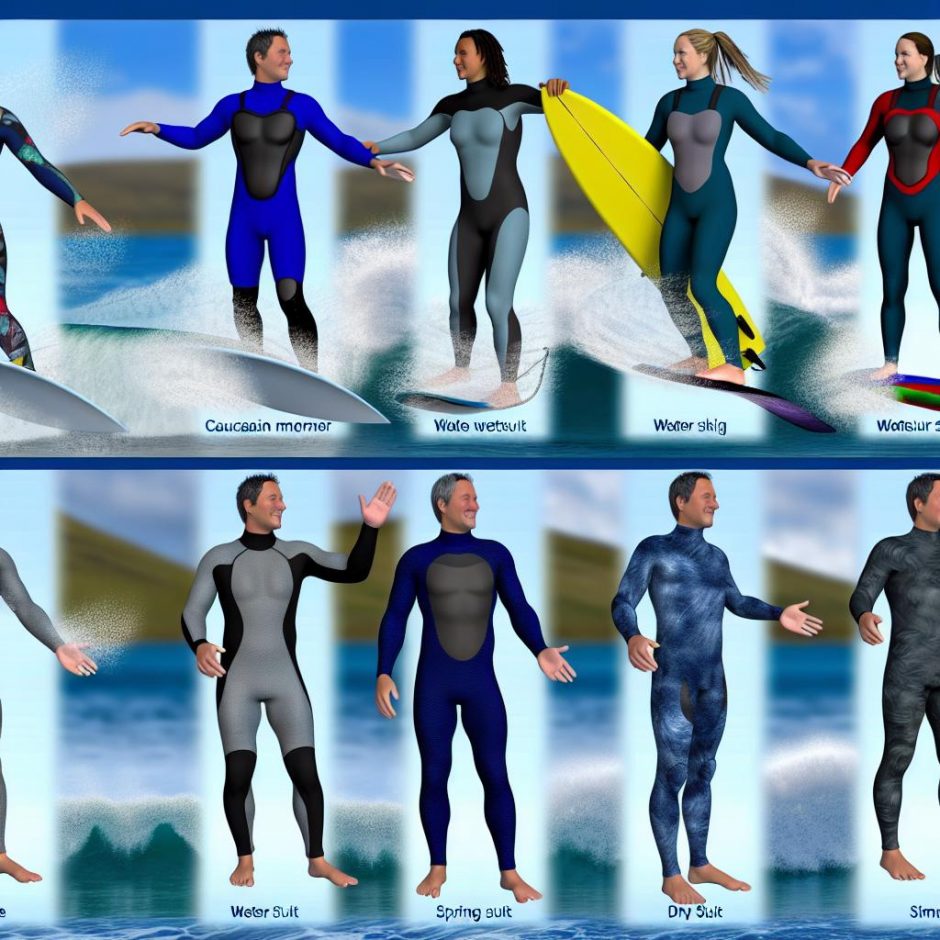Understanding the Importance of the Right Wetsuit
Choosing the right wetsuit is crucial for anyone engaging in water sports. Not only does it provide comfort and enhance performance, but it also ensures safety in varying water conditions. A wetsuit offers essential benefits such as insulation, buoyancy, and protection from environmental elements. Depending on the type of water sport, water temperature, and individual preferences, the selection of different wetsuits can meet diverse needs.
Key Factors to Consider
When selecting a wetsuit, several critical factors must be considered to ensure optimal performance and comfort.
1. Water Temperature: The principal consideration when selecting a wetsuit is the temperature of the water. Wetsuits come in different thicknesses, usually measured in millimeters (mm). A thicker wetsuit provides better insulation, making it more suitable for colder water. However, it’s essential to balance insulation with flexibility, as a thicker wetsuit may limit movement. Understanding the typical water temperatures of your intended environment will help you decide on an appropriate wetsuit thickness.
2. Type of Water Sports: Different water sports impose various demands on wetsuits. For example, surfers may need wetsuits prioritizing flexibility and freedom of movement to perform maneuvers and tricks effectively. In contrast, a diving wetsuit might focus more on thermal protection and durability to withstand deeper waters and longer exposure times. Each sport has specific needs, and understanding these demands is critical when choosing your gear.
3. Wetsuit Thickness: The thickness of a wetsuit directly influences its warmth and flexibility. Common configurations include 3/2mm or 5/4mm, where the numbers indicate the thickness of the neoprene in the core and the limbs, respectively. This structure ensures the torso remains warm while allowing arms and legs the freedom needed for movement. Balancing warmth and mobility according to your activity and the prevailing water conditions is vital for an enjoyable experience.
Wetsuit Materials
Neoprene is the predominant material used in wetsuits due to its superior insulating properties and flexibility. Neoprene has advanced significantly, with innovations such as super-stretch or limestone-based neoprene improving the comfort and performance of wetsuits. When selecting a wetsuit, it’s important to choose materials that provide thermal protection while maintaining ease of movement. Developing technologies in neoprene manufacturing continue to enhance these qualities, offering athletes better gear for various water conditions.
Seams and Seals
The construction of seams in a wetsuit greatly influences its warmth and durability. There are three main types of seam constructions:
– Flatlock: Flatlock seams are ideal for use in warm water conditions. They are breathable, allowing water to pass through, which reduces insulation but offers comfort in warmer environments. While flexible, they are best avoided in cold waters.
– Sealed (glued and blind stitched): Sealed seams create water-resistant barriers, making them more suitable for moderate to cold water temperatures. These seams are crafted to reduce water permeability, thus retaining body heat better than flatlock seams.
– Taped: This involves additional internal taping, which enhances water resistance and durability. Taping is particularly beneficial in cold water conditions, providing extra thermal protection by reducing water entry points, thereby improving overall warmth and longevity.
Sizing and Fit
The fit of a wetsuit is perhaps one of the most vital aspects of its functionality. A well-fitted wetsuit should feel snug yet comfortable, ensuring that it stays close to the skin without restricting movement or blood circulation. A wetsuit that is too tight can impede blood flow and restrict movement, while one that is too loose may result in water entering the suit, diminishing its insulating capabilities. When trying on wetsuits, ensure that it provides adequate freedom of movement and snugness without compromising comfort.
Personal Preferences and Features
Wetsuits can come with a variety of features catering to personal preferences and specific functional needs. Some may offer reinforced knees or extra padding, providing additional protection for activities involving contact with hard surfaces. Others might have detachable hoods, beneficial for varying conditions or as added warmth when needed. Considering these personalization options can further enhance the wetsuit’s utility and your experience in specific water sports scenarios.
Useful Resources
To make an informed decision when choosing a wetsuit, it’s advisable to seek guidance from specialized retailers or consult resources tailored to your specific water sports. Online platforms providing comparisons or detailed reviews offer valuable insights, assisting in the selection process. For instance, websites like Wetsuit Wearhouse offer comprehensive information along with purchasing options, making them an excellent resource for exploring suitable wetsuit choices.
In conclusion, selecting the right wetsuit involves considering numerous factors ranging from water temperature and sports-specific requirements to material choice and fit. Each aspect plays a significant role in ensuring your comfort and safety, impacting your overall water sports experience. By carefully evaluating these considerations and exploring available resources, you can find the ideal wetsuit to meet your personal needs and enhance your aquatic adventures.

